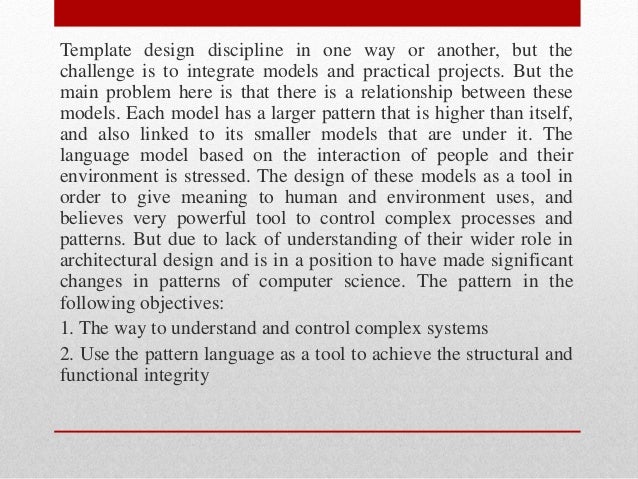A New Theory Of Urban Design Christopher Alexander Pdf Editor

In this radical new look at the theory and practice of urban design, Christopher Alexander asks why our modern cities so often lack a sense of natural growth, and suggests a set of rules and guidelines by which we can inject that `organic' character back into our High Streets, buildings, and squares. At a time when so many of Britain's inner cities are undergoing, or are in need of, drastic renovation, Christopher Alexander's detailed account of his own experiments in urban-renewal in San Francisco makes thought-provoking reading.
Tekla structures 17 license server cracked skywars pc. Christopher Alexander. His theories about the nature of human-centered design have affected fields beyond architecture, including urban design, software, sociology and others. Alexander has designed and personally built over 100 buildings, both as an architect and a general contractor.
• 5.6k Downloads • Abstract A Pattern Language by Christopher Alexander is renowned for providing simple, conveniently formatted, humanist solutions to complex design problems ranging in scale from urban planning through to interior design. This text is also believed to be the most widely read architectural treatise ever published. Despite this, there is also little acknowledgement in its popular reception that it is only one part of a trilogy of works documenting Alexander’s ‘second theory’ of architecture. Thus, while A Pattern Language is widely referenced in architectural scholarship, most of these references simply acknowledge its existence and fail to engage with its content. Cd i emulator cracked rib. Furthermore, the literature that does critically engage with Alexander’s theory, challenging its ideas and assumptions, is often difficult to find, and the criticisms are diverse and complex.
The intent of this paper is to facilitate a deeper understanding of these criticisms and the relationships between them. The 28 criticisms identified in past research are organised hierarchically in this paper into three tiers representing those associated with the: (i) conceptualisation, (ii) development and documentation and, (iii) implementation and outcomes of Alexander’s theory. The relationships between these criticisms are then mapped diagrammatically thereby forming the basis for thematic groupings within each hierarchical tier. This organisation reveals that only two criticisms relate to the concept of pattern languages in isolation, while the remainder arise, directly or indirectly, from Alexander’s idiosyncratic ontological and epistemological positions. The conclusion analyses the relationships between the criticisms to develop a holistic and understanding of where the problems in Alexander’s theory might lie. Massive social, technical and economic changes during the nineteenth century provided the catalyst for the rise of modernism in architecture, and the creation of some of the world’s most iconic buildings. However, the relentless pursuit of the modernist aesthetic also produced examples of uncomfortable and inhospitable spaces.
Christopher Alexander was amongst the most vocal critics of these spaces and responded to them by devoting his career to developing three unique and closely related theories of architectural and urban design. This paper focuses on Alexander’s ‘second theory’ of architecture, which appeared in the form of three canonical texts, The Timeless Way of Building (Alexander ), A Pattern Language (Alexander et al. ), and the Oregon Experiment (Alexander et al. It must be noted that Alexander’s research actually constitutes a single, slowly evolving theory of architecture that spans his entire career. However, these three texts represent a stable, middle stage in Alexander’s research and collectively provide a sufficiently self-contained set of ideas to be described (for the ease of the following discussion) as his ‘second theory’.